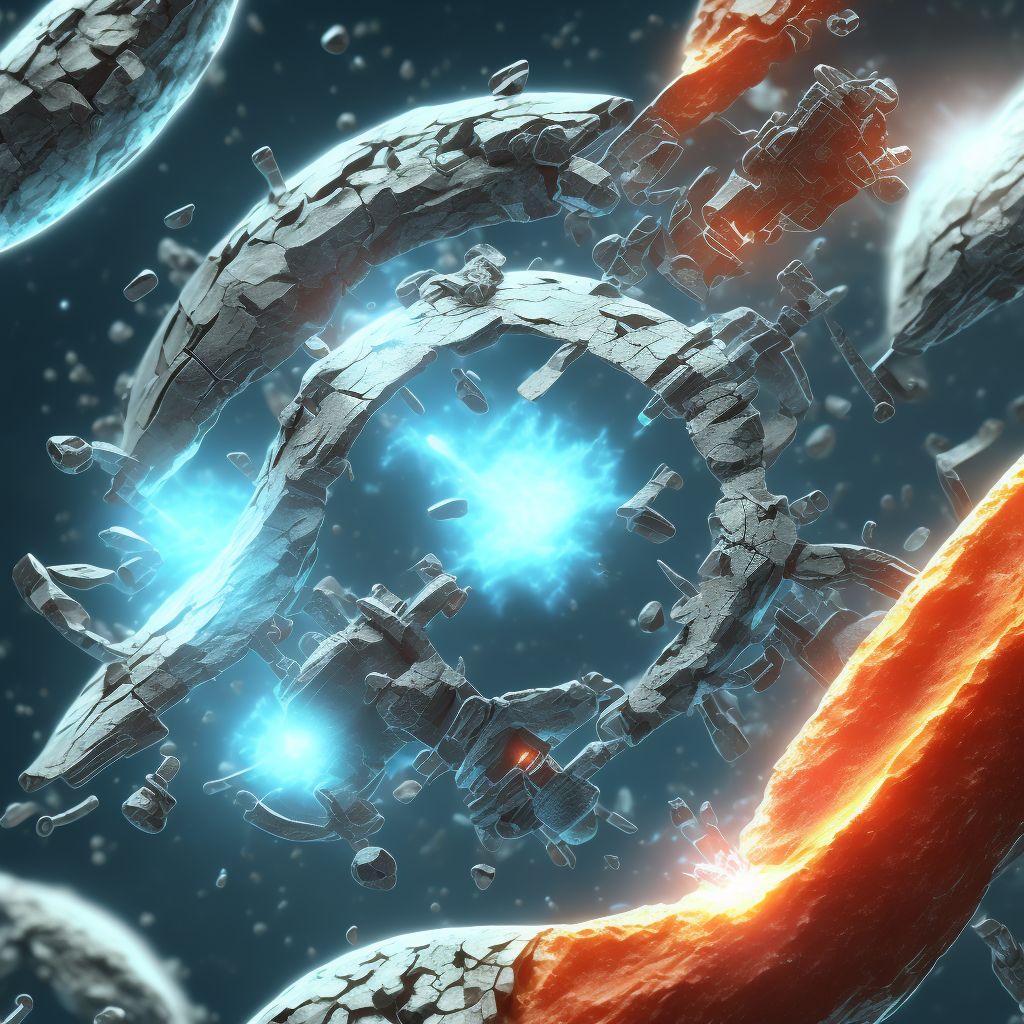
Nondisplaced oblique fracture of shaft of unspecified fibula, subsequent encounter for open fracture type IIIA, IIIB, or IIIC with routine healing Save
ICD-10 code: S82.436F
Disease category: S82.436: Nondisplaced oblique fracture of shaft of unspecified fibula
Nondisplaced Oblique Fracture of Shaft of Unspecified Fibula: Understanding the Healing Process
A nondisplaced oblique fracture of the shaft of the unspecified fibula refers to a specific type of bone breakage that occurs in the lower leg. This fracture is characterized by a clean break in the fibula bone, where the bone remains in alignment, but the break occurs at an oblique angle.
After the initial encounter for the open fracture type IIIA, IIIB, or IIIC, the subsequent encounter involves monitoring the healing process. In this article, we will discuss the routine healing process of a nondisplaced oblique fracture of the shaft of the unspecified fibula.
- Inflammation and Blood Clot Formation: Immediately after the fracture, the body initiates an inflammatory response. Blood vessels at the site of the fracture constrict to prevent excessive bleeding, and a blood clot forms to stabilize the broken bone.
- Callus Formation: Within a few days, specialized cells called osteoblasts begin to create a soft callus around the fracture site. This callus acts as a bridge between the broken ends of the bone, providing stability and support.
- Remodeling Phase: Over the next several weeks, the callus undergoes a process called remodeling. Osteoclasts remove excess bone tissue, while osteoblasts deposit new bone to strengthen the fracture site. This phase continues until the bone returns to its original, pre-fracture state.
During the healing process, it is important to follow the guidance of medical professionals. They may recommend certain activities or restrict movement to aid in the healing process. Compliance with these instructions can significantly contribute to a successful recovery.
It is worth noting that the healing time for a nondisplaced oblique fracture of the shaft of the unspecified fibula varies depending on several factors, such as the individual's age, overall health, and the severity of the fracture. It is crucial to remain patient and allow the body ample time to heal naturally.
In conclusion, understanding the routine healing process of a nondisplaced oblique fracture of the shaft of the unspecified fibula can provide valuable insights into the recovery journey. By providing the necessary care and following medical advice, individuals can optimize their healing and restore their leg's functionality.
Treatment of Nondisplaced oblique fracture of shaft of unspecified fibula, subsequent encounter for open fracture type IIIA, IIIB, or IIIC with routine healing:
Treatment Options for Nondisplaced Oblique Fracture of the Shaft of Unspecified Fibula, Subsequent Encounter for Open Fracture Type IIIA, IIIB, or IIIC with Routine Healing
When it comes to a nondisplaced oblique fracture of the shaft of an unspecified fibula, subsequent encounters for open fracture type IIIA, IIIB, or IIIC with routine healing, there are several treatment options ...
To see full information about treatment please Sign up or Log in